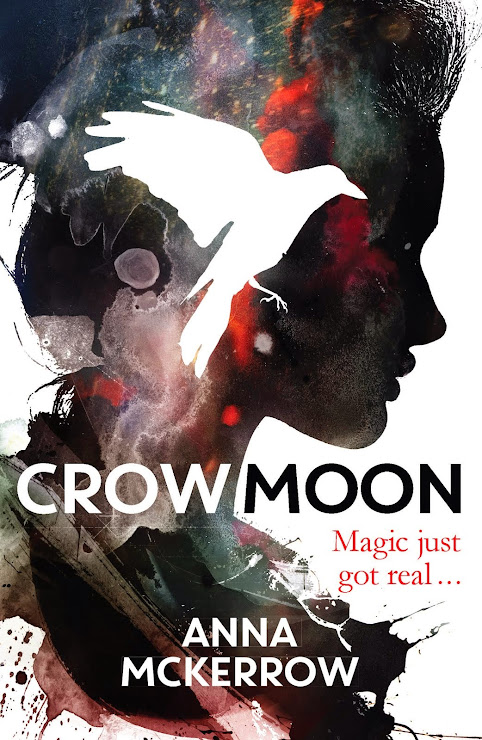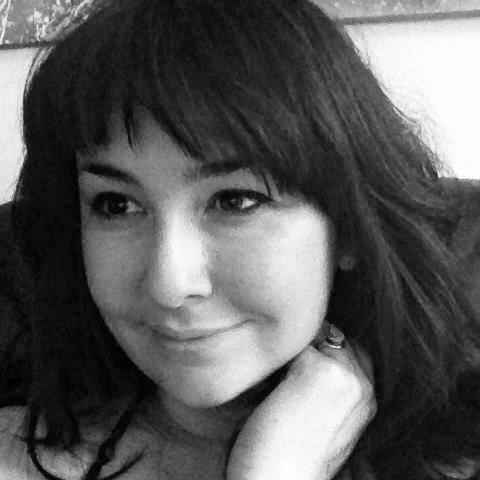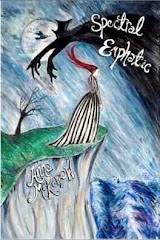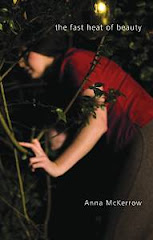My notes from a very interesting day's conference at Roehampton a week and a half ago.
Magdalena Sikorska (Kazmierz Wielki University, Poland)
Graphic emotions: affective visual language in contemporary picturebooks
Looking at picturebooks that portray difficult-to-depict emotions and culturally sensitive issues. Picturebooks that challenge the emotional stability of the adult world. Encoding and decoding emotions.
DH Lawrence: We devalue the inner life and overemphasise the intellectual (paraphrased).
Books:
Katarzyna Kotowska The Hedgehog – adoption
Anthony Browne – My Dad – emotional distance / coldness between father and daughter
Shaun Tan – The Lost Thing - oppression
Benjamin Lacombe – L’enfant silence – Being lost, mute, not being able to communicate
Iwona Chmielewska – a book about menstruation (I didn’t get the title, sorry)
Stian Hole – Garmann’s Street - bullying
Svein Nyhus – Wlosy Mamy – maternal depression
Erica Gillingham (Independent Researcher)
When love takes over: falling in love and coming out in young adult fiction
Looking at modern explorations of LGBT relationships and the coming out narrative in YA books – how modern novels have moved on from a) only considering “coming out” and b) this being a negative experience, ending in death/suicide/depression/being ostracised.
In 1969 the first YA novel with a gay character was published – I’ll get there, it better be worth the trip by John Donovan. Since then over 300 YA novels have been published featuring LGBT characters in some way.
In the 70s-90s a gay/queer narrative was only contained in a “problem” novel. When characters came out it ended in disaster – and there were no profound experiences of love, passion or a gay relationship. More recently there have been a range of genres and styles of YA writing – fantasy, magical realism.
Queer YA can be categorised in three areas (with many novels containing more than one of these themes)
a) Homosexual visibility – the coming out narrative
b) Gay assimilation – Stories in which character/s happen to be gay, but the story doesn’t have sexuality as its main focus
c) Queer community/Queer consciousness – Shows characters within the context of their families and a gay community
Book list:
Malinda Lo – Ash, Huntress
Jane England – Wildthorn
Joanne Horniman – About a Girl
Alex Sanchez – The Rainbow Boys
Martin Wilson – What They Always Tell Us
Paula Boock - Dare Truth or Promise
Julia Anne Peters – Keeping you a secret
David Levithan - Boy Meets Boy
Emily M Danforth - The Miseducation of Cameron Post
Brent Hartinger - Geography Club
Julie Anne Peters - RAGE: A love story
Sara Ryan - Empress of the World
Laura Goode – Sister Mischief
Books by Dan Savage and Terry Miller.
Considering the Anthropomorphism Paradox
Anthropomorphism gets a bad press. Why?
Reasons against:
a)It’s inherently demeaning to animals
i.e. why is a wolf dressed in a scarf to hunt pigs? Does it make him an inadequate human being, and ridiculous? It eliminates the dignity of the animal.
b) Cuteness
Using humanised/talking animals is just a way to make books look cuter and sell more books
c) Dumbing down a narrative
That is, anth. could be seen as asking us to forget what we know about the real world and accept the fictional as real.
d)Disappointment for children
When they realise/learn wild animals aren’t friendly/can talk etc.
e)Affecting life decisions as an adult
The idea that what we read about animals as children can affect the decisions we make in relation to them in adult life – i.e. whether to remove them from gardens or urban areas; eat them etc.
Criticising the criticisms
· The criticisms do not consider why anth. exists in the first place or why it is so popular – thinking about how we relate to the environment
· There is a difference between identifying with an animal character and feeling empathy for an animal character who is exploring human emotions/situation
· We are just one species amongst many – it’s not what separates us nut what we have in common with the animal.
· Animals in books remind adults of our “animal urges” and children identify with the animalistic life needs of eating, sleeping, defecating.
Anth. forces us to take sides with/against animals, e.g. wolves = bad, mice = good?
Ursula Le Guin – Cheek by Jowl – book about anthropomorphism, children’s literature and sci-fi – our innate connection to animals.
Farah Mendlesohn
What is This Child You Speak of?
Readers under 12 are referred to as the blanket term of “child”, unlike adult readers who are split into a variety of classifications: female reader, gay reader, black reader etc.
Recommended reads: Delusions of Gender – Cordelia Fine, Watching Kids – Leila Berg and Holly Blandford – Why Literature Matters to Girls.
Jacqueline Rose – “the child cannot exist in literature created by adults other than a figure of fantasy or desire which society needs to believe”
Rose believed that children did not choose books, but they are not just dumb recipients of books as gifts – “pester power”, word of mouth and scrounging and bartering. Reading books they find at friends’ houses etc.
Writers have frequently not experienced what they write about. But all adults have been children. Do we act as though we were never children? We don’t all have the same memory of it.
In terms of research: humanities researchers are generally unaware of what constitutes the “average child” – talked about the statistical differences found when considering mean, median, mode and range. We can know everything about the child – race, sex, religion, parents’ occupation – but know nothing about their inner lives.
The books above explore the processes of people watching children and trying to understand the inner life of children.
The word “child” erases differences between children.
Why are we so determined to construct the inner life of the child, when we recognise that knowing the inner life of “the adult” is impossible?
IS there an “essential child” or does the definition change with time?
Conclusion: we should accept that we can never know someone else’s inner self, but acknowledge that as humans we always want to find it.
Philip Gross
Outside In – on creative work with young people
Borders, edges and margins produce stories. Borderlines are creative places.
If there is a border, there is an edge, and therefore conflict and uncertainty, and chances of invasions and evasions. Lawlessness on the border = STORY!
Creative = stepping over a border between real and made up.
“Re-composing the world around you in a different order that increases the available options for ways of being or responding”
If a border = risk, there are options there for harm as well as inspiration.
In an age when young people are skilled at performing themselves for others – ie YouTube – is there an urge to speak up for an inner space where you can hold the world at a distance? That isn’t the only place we can be cerative, but it shouldn’t be lost. Long, boring spaces of inwardness – the bookish child – have they been lost with today’s higher levels of stimulation, socialising and networking?
The Moomins – “a bible of healthy introversion”
All characters have intense inner lives that we don’t necessarily know about, but we know they have them.
Borders are places of risk. As a parent, nervous of a child’s inner space, because when they go there, you don’t know where they are. His daughter’s anorexia, as explored in his book The Wasting Game. Is an illness like anorexia a way that creativity is lost – because obsession offers no options?
PG often plays a writing game with children – describing boxes. One person describes the exterior of an imaginary box to another, and the second person then describes what is inside the box. Children find this interesting because of a concern with interiors and exteriors, and the dissonance they can contain. Children spend a lot of time second-guessing the internal state of adults, and are very upset with “two-facedness”.
Wednesday 23 May 2012
Friday 4 May 2012
Anais Nin - The House of Incest, original recording by Louis and Bebe Barron
I am priveliged to have in the CD player in my car (the only place I get any peace to listen to anything) the orginal audio recording of Anais Nin reading her symbolist prose poem The House of Incest. I came to get it from my dad who has just finished his BA dissertation on Louis and Bebe Barron, the sound artists who created the soundtrack to Forbidden Planet. This recording is one of a number of recordings of artists reading their own work that the Barrons recorded in 1949.
The House of Incest is a surrealistic look within the narrator's subconscious mind as she attempts to escape from a dream in which she is trapped, or in Nin's words, as she attempts to escape from "the woman's season in hell." So says Wikipedia.
Nin's usage of the word incest in this case is metaphorical, not literal. In other words, in this book the word "incest" describes a selfish love where one can appreciate in another only that which is similar to oneself. One is then only loving oneself, shunning all differences. At first, such a self-love can seem ideal because it is without fear and without risk. But eventually it becomes a sterile nightmare. Toward the end of the book, the character called "the modern Christ" puts Nin’s use of the word into context: “If only we could all escape from this house of incest, where we only love ourselves in the other."
Nin was under the analysis of Otto Rank during the period of writing House of Incest. Rank was an early disciple of Freud, serving as the secretary and youngest member of his Vienna group, but had long since dissented from Freudian orthodoxy and developed his own theoretical school. Incest: From a Journal of Love"—The Unexpurgated Diary of Anaïs Nin (1932–1934) reveals that the two were also having an affair.
Rank helped Anaïs edit House of Incest. He had experience with this topic, as Otto Rank's most famous book is The Trauma of Birth. House of Incest is largely an attempt by the narrator to cope with the shock of the trauma of birth. Anaïs Nin describes the process as akin to being "[e]jected from a paradise of soundlessness.... thrown up on a rock, the skeleton of a ship choked in its own sails."
In Anaïs Nin: An Introduction, authors Duane Schneider and Benjamin Franklin V both argue that the basic theme of House of Incest is that ultimately life in the real world, which contains both pleasure and pain, is preferable to any self-created world that attempts to include only pleasure [1]. Franklin and Schneider argue that a world consisting only of pleasure is ultimately a sterile world where intellectual, emotional, and spiritual growth is not possible, and what results is stunted people. In this, they offer the passage from House of Incest wherein Anaïs Nin writes, "Worlds self made are so full of monsters and demons."
The prose of House of Incest is considered by many to be one of the major challenges of the work. The prose and tone of the work is not linear and does not utilize everyday language. Rather, the book is written in prose that is often described as either surrealist or symbolist.
"My first vision of earth was water veiled. I am of the race of men and women who see all things through this curtain of sea and my eyes are the color of water. I looked with chameleon eyes upon the changing face of the world, looked with anonymous vision upon my uncompleted self." (Page 15)
It's a really beautiful piece, and Nin's voice, off-key intonation and accent gives it an otherwordliness and exoticism.
The House of Incest is a surrealistic look within the narrator's subconscious mind as she attempts to escape from a dream in which she is trapped, or in Nin's words, as she attempts to escape from "the woman's season in hell." So says Wikipedia.
Nin's usage of the word incest in this case is metaphorical, not literal. In other words, in this book the word "incest" describes a selfish love where one can appreciate in another only that which is similar to oneself. One is then only loving oneself, shunning all differences. At first, such a self-love can seem ideal because it is without fear and without risk. But eventually it becomes a sterile nightmare. Toward the end of the book, the character called "the modern Christ" puts Nin’s use of the word into context: “If only we could all escape from this house of incest, where we only love ourselves in the other."
Nin was under the analysis of Otto Rank during the period of writing House of Incest. Rank was an early disciple of Freud, serving as the secretary and youngest member of his Vienna group, but had long since dissented from Freudian orthodoxy and developed his own theoretical school. Incest: From a Journal of Love"—The Unexpurgated Diary of Anaïs Nin (1932–1934) reveals that the two were also having an affair.
Rank helped Anaïs edit House of Incest. He had experience with this topic, as Otto Rank's most famous book is The Trauma of Birth. House of Incest is largely an attempt by the narrator to cope with the shock of the trauma of birth. Anaïs Nin describes the process as akin to being "[e]jected from a paradise of soundlessness.... thrown up on a rock, the skeleton of a ship choked in its own sails."
In Anaïs Nin: An Introduction, authors Duane Schneider and Benjamin Franklin V both argue that the basic theme of House of Incest is that ultimately life in the real world, which contains both pleasure and pain, is preferable to any self-created world that attempts to include only pleasure [1]. Franklin and Schneider argue that a world consisting only of pleasure is ultimately a sterile world where intellectual, emotional, and spiritual growth is not possible, and what results is stunted people. In this, they offer the passage from House of Incest wherein Anaïs Nin writes, "Worlds self made are so full of monsters and demons."
The prose of House of Incest is considered by many to be one of the major challenges of the work. The prose and tone of the work is not linear and does not utilize everyday language. Rather, the book is written in prose that is often described as either surrealist or symbolist.
"My first vision of earth was water veiled. I am of the race of men and women who see all things through this curtain of sea and my eyes are the color of water. I looked with chameleon eyes upon the changing face of the world, looked with anonymous vision upon my uncompleted self." (Page 15)
It's a really beautiful piece, and Nin's voice, off-key intonation and accent gives it an otherwordliness and exoticism.
Subscribe to:
Posts (Atom)






